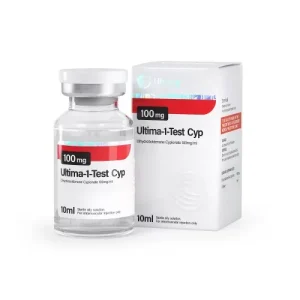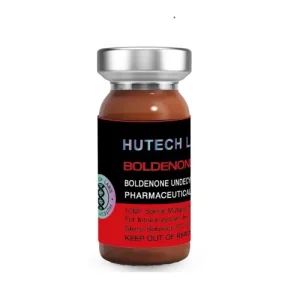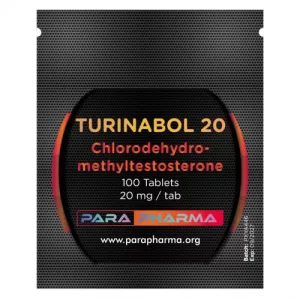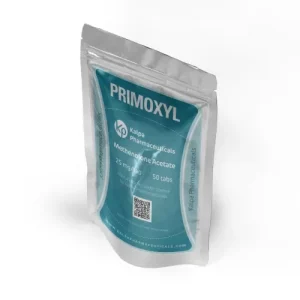Steroids
4 Diseases We Can Treat with Steroids
What are Anabolic Steroids?
Anabolic Steroids are synthetic drugs that resemble cortisol. Cortisol is a hormone produced by the body naturally. They work effectively by bringing down the inflammation and reducing the activity of the immune system. They used to treat several inflammatory conditions and some diseases can treat with steroids. Corticosteroids are not the same as the anabolic steroids. Athletes and sportspersons use anabolics to build their muscles. Some of the medications of these corticosteroids include the prednisone, cortisone, and methylprednisolone, etc.
Anabolic Steroids:

These steroids mostly used by athletes to enhance their performance. If they use them illegally, the players can also suspend from the game in this case.
When these steroids are used legitimately in medicines, they are used to treat multiple conditions in humans, such as low testosterone levels, delayed puberty in boys, blood disorders, and individual bones disorders.
Unfortunately, most of the times these anabolic steroids are used by the weightlifters as well as sportsmen for the enhancement of their performance as mentioned earlier as well.
Therefore, they usually considered to be having negative traits mostly. No doubt when they use it for non-medical purposes; they cause issues like cardiovascular ailments and psychiatric problems.
Side Effects

Steroids potentially have several side effects. Hence you must take them in a prescribed manner. One should visit one's physicians regularly to avoid complications in this regards.
Some of the side effects of these steroids may include cataracts, brittle bones, glaucoma, thin skin, liver damage, muscle weakness, and increased infections.
Precautions and Warnings:

Steroids must always be in a prescribed dosage. If these made an overdosage, then your body may not be able to produce the corticosteroids naturally.
Daily usage of these anabolics may develop severe measles or chickenpox in addition to several other conditions. Therefore, be in regular contact with your doctor to take care of such issues.
How can we take Steroids?

Steroids are given orally (by mouth), topically (ointment or cream), or even via injection. When injections, provided it is done into a muscle or a vein, directly into the joints or around the tendons, bursa or other soft tissues.
How Do Steroids Work?

Steroids may reduce the inflammation as well as the activity of the immune system. Inflammation is a process in which white blood cells and relevant chemicals protect the body against foreign organisms and infections such as viruses and bacteria.
At times, the defense system of the body does not function properly and becomes over-reactive. This causes inflammation, and it works against the tissues of the body and damages the tissue. Inflammation can characterize by warmth, redness, pain, and swelling.
So steroids are there to reduce the inflammation production and at the same time minimize the tissue damage. Also, reduce the immune system's activities by affecting white blood cells functioning.
What Diseases can treat with Steroids?
Several conditions treated with steroids. Some of these are as follows:
Arthritis:

One of the main features that steroid serve is the reduction of inflammation. All the conditions that involve joint redness, swelling, pain, and limited mobility treats with the help of steroids.
For arthritis, these corticosteroids take them in the form of pills, and then the medication spreads in the body throughout. They injected into an inflamed joint directly keeping the most of the medicines in a restricted area.
Must Read: 5 Ways To Recover With the Help of Steroids After Surgery
Asthma:

Steroids are useful for asthma too. As corticosteroids control the immune system of the body and at the same time reduces the inflammation; it opens the airways inside the lungs. Steroids, in this case, take them in the form of the inhaler. It can use as routine care for asthma.
This facilitates in reducing the asthma symptoms and at the same time prevents the acute attacks. In the case of cute attacks where the hospital visit required for asthma, these steroids give as intravenous injections.
Must Read: How Exercise Helps Asthma Patients in Their Life
Ocular Inflammatory Disease:
Lotemax considered being safe for the intraocular and topical ocular inflammation treatment. Its uses in the form of ointments and creams.
Eczema and Cancer:

As we have already mentioned that steroids are the most effective when it is about inflammatory diseases, therefore, it successfully treats the conditions like psoriasis, eczema, and dermatitis, where there steroid Oriente ointments and creams, used for the treatments.
Oral treatment is prescribed for autoimmune diseases like Crohn diseases, lupus, and multiple sclerosis. Corticosteroids can treat several eye-related disorders and some forms of cancers. They facilitate in reducing nausea that associate with chemotherapy.
They reduce the allergic reactions that usually caused by blood transfusion. This discussion can conclude by saying that no doubt steroids used to treat several diseases; however, you shout take them under supervision to be used effectively.
Must Read: Prostate Cancer And Steroids: Let The Pendulum Swing
Steroids
ACE-031: A Powerful Myostatin Inhibitor

ACE-031 is a synthetic peptide designed to block myostatin, a natural regulator of muscle growth. Developed by Acceleron Pharma, it was originally studied as a treatment for muscle-wasting conditions like muscular dystrophy. By inhibiting myostatin, ACE-031 enables unrestricted muscle growth, making it appealing to athletes and bodybuilders seeking increased muscle mass and strength.
Benefits for Bodybuilders
ACE-031 offers significant advantages for bodybuilders aiming to maximize muscle growth:
Enhanced Muscle Development – By blocking myostatin, ACE-031 eliminates the biological limit on muscle expansion, allowing for significant increases in lean muscle mass.
 Check out 3-Test 400 Blend by Nakon Medical
Check out 3-Test 400 Blend by Nakon Medical
Improved Endurance and Fat Reduction – Users may experience enhanced endurance and reduced fat accumulation, which contributes to overall body composition improvements.
Accelerated Recovery – The peptide aids in muscle repair, shortening recovery time after strenuous workouts and enabling more frequent training sessions.
These benefits make ACE-031 a valuable tool for bodybuilders seeking superior performance and rapid results.
Must Read: 10 Week Program & 5,000 Rep Arm Specialization Program
Potential Side Effects
While ACE-031 delivers powerful muscle-building effects, it is not without risks:
Swelling in Limbs – Some users report fluid retention and swelling, particularly in the arms and legs.
Weakened Tendons and Ligaments – Rapid muscle growth may surpass the body's ability to strengthen tendons and connective tissues, potentially leading to strain or injury.
Unknown Long-Term Effects – Since human studies on ACE-031 are limited, the full scope of potential risks remains uncertain.
Given these concerns, careful monitoring and responsible use are essential.
Recommended Dosage and Cycling
Due to its potency, ACE-031 should be dosed conservatively:
Beginner Dosage – 1 mg per week, injected subcutaneously or intramuscularly, to assess tolerance.
Experienced Users – Up to 3 mg per week, but only with caution and close observation for adverse effects.
Cycling Approach – A typical cycle lasts 4–6 weeks, followed by a break to prevent desensitization and allow the body to reset.
Using ACE-031 responsibly within structured cycles helps mitigate risks and optimize benefits.
 Click Here to Buy 1-Test Cyp by Ultima Pharmaceuticals
Click Here to Buy 1-Test Cyp by Ultima Pharmaceuticals
Potential Alternatives to ACE-031
Here are 10 alternatives to ACE-031 that also function as myostatin inhibitors or support muscle growth through similar mechanisms:
Follistatin-344 – A potent myostatin inhibitor that promotes muscle hypertrophy by blocking myostatin activity.
BPC-157 – Known for its regenerative properties, it enhances healing and tissue repair, indirectly supporting muscle growth.
CJC-1295 – A growth hormone-releasing peptide that boosts GH levels, aiding in muscle development.
Ipamorelin – Stimulates GH release with minimal side effects, making it a safer option for muscle enhancement.
MK-677 (Ibutamoren) – A powerful GH secretagogue that promotes muscle growth and fat loss.
Sermorelin – Encourages natural GH production, supporting recovery and lean muscle gains.
Tesamorelin – Primarily used for fat loss but also aids in muscle preservation.
PEG-MGF (Pegylated Mechano Growth Factor) – Enhances muscle repair and growth post-exercise.
GHRP-6 – Stimulates appetite and GH release, supporting muscle mass gains.
Activin A Blockers – Experimental compounds that target the myostatin pathway to enhance muscle growth.
Each of these alternatives has unique mechanisms and benefits, so selecting the right one depends on your specific goals.
ACE-031 is available in several forms for purchase, depending on the supplier. Here are the common options:
Peptide Vial – Typically comes in 1 mg vials for reconstitution.
Pre-Mixed Pen – A ready-to-use injectable form for convenience.
Nasal Spray – An alternative delivery method for those avoiding injections.
Peptide Stacks – Some suppliers offer ACE-031 combined with IGF-1 LR3 for enhanced muscle growth.
You can find these forms from suppliers like PharmaLabGlobal and Direct Peptides.
Related Article: Anavar Cycle for Men and Women
Overall
ACE-031 presents promising muscle-building advantages, making it a sought-after peptide among bodybuilders. However, due to limited research and potential side effects, users should approach it with caution, adhere to recommended dosages, and seek professional guidance to ensure safe usage.
Steroids
Decoding IGF-1 LR3: A Guide to its Benefits

IGF-1 LR3 (Insulin-like Growth Factor-1 Long Arg3) is a synthetic variant of IGF-1, a hormone produced by the liver in response to growth hormone (GH). Unlike GH, which works indirectly, IGF-1 directly facilitates the growth and repair of muscle cells.
Related Article: Ostarine for Beginners; The Ultimate Guide
This modified version of IGF-1 is engineered to avoid binding with IGF-binding proteins, extending its half-life to 20–30 hours. As a result, it remains active in the body significantly longer than natural IGF-1.
 Click here to BuyBoldenone 300 by Hutech
Click here to BuyBoldenone 300 by Hutech
Many performance athletes incorporate IGF-1 LR3 post-workout to enhance muscle growth, speed up recovery, and support fat loss. When injected into specific muscle groups, it often produces localized effects. Additionally, it helps with nutrient distribution and, in some cases, improves insulin sensitivity.
On the other hand, human growth hormone (HGH) operates more broadly and indirectly, stimulating the liver to produce IGF-1 and offering more systemic benefits such as improved skin health, joint support, and fat reduction, albeit at a slower pace.
Typical IGF-1 LR3 doses range from 20–50 mcg daily, administered subcutaneously or intramuscularly, often following a workout.
Key Features of IGF-1 LR3
Enhanced Bioavailability: It avoids binding with IGF-binding proteins, increasing its potency.
Muscle Growth & Repair: Directly stimulates muscle cell proliferation and differentiation.
Improved Nutrient Distribution: Helps shuttle nutrients into muscle cells, supporting recovery.
Potential Fat Loss Benefits: Some users report improved insulin sensitivity and fat metabolism.
Mechanism of Action
IGF-1 LR3 interacts with IGF-1 receptors on muscle cells, activating pathways like PI3K-AKT and MAPK, which are crucial for cell growth and regeneration. This makes it a powerful tool for bodybuilders and athletes looking to optimize recovery and muscle development.
What Are the Top 10 Alternatives to IGF-1 LR3?
Here are some of the top alternatives to IGF-1 LR3, each with unique benefits for muscle growth, recovery, and performance:
BPC-157 – Known for its regenerative properties, it enhances healing and tissue repair.
CJC-1295 – A growth hormone-releasing peptide that boosts GH levels for muscle development.
Ipamorelin – Stimulates GH release with minimal side effects, making it a safer option.
MK-677 (Ibutamoren) – A potent GH secretagogue that promotes muscle growth and fat loss.
Sermorelin – Encourages natural GH production, supporting recovery and lean muscle gains.
Tesamorelin – Primarily used for fat loss, but also aids in muscle preservation.
Follistatin-344 – Inhibits myostatin, allowing for increased muscle hypertrophy.
PEG-MGF (Pegylated Mechano Growth Factor) – Enhances muscle repair and growth post-exercise.
GHRP-6 – Stimulates appetite and GH release, supporting muscle mass gains.
GHRP-2 – Similar to GHRP-6 but with fewer hunger-related side effects.
Each of these peptides has distinct mechanisms and benefits.
Must Read: Are Nootropics a Better Option to AAS?
Potential Risks Associated With IGF-1 LR3
IGF-1 LR3 comes with several potential risks, especially for bodybuilders using it to enhance muscle growth. Here are some key concerns:
Hypoglycemia (Low Blood Sugar) – IGF-1 LR3 increases glucose uptake in muscle cells, which can lead to dangerously low blood sugar levels if not managed properly.
Organ Growth – Since IGF-1 affects all tissues, excessive use may lead to unwanted growth in organs, increasing health risks.
Cancer Risk – IGF-1 plays a role in cell proliferation, and elevated levels have been linked to an increased risk of certain cancers.
Water Retention & Edema – Some users experience bloating and fluid retention, which can affect performance and aesthetics.
Joint Pain & Stiffness – Excessive IGF-1 levels may contribute to joint discomfort due to increased tissue growth.
Cardiovascular Issues – There is some concern that IGF-1 LR3 could contribute to heart enlargement or other cardiovascular complications.
Desensitization – Long-term use may reduce the body's natural IGF-1 production, leading to dependency
Overall
IGF-1 LR3's ability to bypass IGF-binding proteins makes it more potent but also increases the likelihood of desensitization with prolonged use. For those considering it, careful dosing and monitoring are crucial to mitigate side effects.
Steroids
AOD-9604: The Fat-Burning Peptide Explained

AOD-9604, along with the similar HGH Frag 176-191, is a peptide derived from Growth Hormone that includes only the amino acids in HGH responsible for stimulating fat breakdown, known as lipolysis.
This means that these peptides offer the fat-burning benefits of HGH without its other effects—whether beneficial or adverse—and come at a lower cost.
Related Article: Anavar Cycle for Men and Women
Lipolysis refers to the process where fat cells are broken down to be utilized as energy. AOD-9604 promotes accelerated fat loss by increasing the body's use of fat as fuel.
For optimal results, the peptides should be used in a fasted state. AOD-9604 and Frag 176-191 are most effective when administered at a dose of 125-250mcg before bedtime (at least 3-4 hours after eating) and in the morning at the same dose, followed by a fasting period of 3-4 hours, ideally combined with fasted cardio.
Check Out Dragontropin HGH 100 IU by Dragon Pharma
Similar Peptides with Fat-Burning Effect
Here’s a list of 10 peptides similar to AOD-9604, each with a brief description:
Ipamorelin: A growth hormone-releasing peptide (GHRP) that stimulates the natural release of growth hormone, promoting fat loss, muscle growth, and improved recovery without affecting other hormones like cortisol or prolactin.
 Click Here to Buy: Turinabol 20 by Para Pharma
Click Here to Buy: Turinabol 20 by Para Pharma
CJC-1295: A peptide that increases growth hormone and IGF-1 levels, aiding in fat loss, muscle gain, and improved sleep quality. It has a long half-life, making it convenient for users.
HGH Frag 176-191: A fragment of human growth hormone specifically designed for fat-burning. It targets adipose tissue without the broader effects of full-length HGH.
Tesamorelin: Known for reducing visceral fat, this peptide stimulates the release of growth hormone and is often used for weight management and metabolic health.
BPC-157: While primarily known for healing and recovery, BPC-157 can support fat loss indirectly by improving gut health and reducing inflammation.
Melanotan II: Originally developed for skin tanning, it also has appetite-suppressing properties, making it useful for weight management.
Thymosin Beta-4 (TB-500): Focused on healing and recovery, it can enhance physical performance and indirectly support fat loss through improved activity levels.
GHRP-6: A growth hormone-releasing peptide that boosts appetite and metabolism, aiding in muscle growth and fat loss.
Semaglutide: A GLP-1 receptor agonist that regulates appetite and blood sugar levels, making it effective for weight loss and metabolic health.
MK-677 (Ibutamoren): A growth hormone secretagogue that increases growth hormone and IGF-1 levels, promoting fat loss, muscle gain, and improved recovery.
List of Peptides With a Counteractive Effect Bodybuilders Must Avoid
 Click Here to Buy Primoxyl 25 by Kalpa Pharmaceuticals
Click Here to Buy Primoxyl 25 by Kalpa Pharmaceuticals
Some peptides can inadvertently lead to fat gain due to their effects on metabolism and appetite regulation. Here are a few that bodybuilders might want to avoid or use cautiously:
- GHRP-6 – While it stimulates growth hormone release, it also significantly increases appetite, which can lead to excess calorie consumption and fat gain.
- IGF-1 LR3 – This peptide enhances muscle growth but can also promote fat storage if not carefully managed with diet and training.
- MK-677 (Ibutamoren) – Though technically a growth hormone secretagogue rather than a peptide, it boosts GH levels but often leads to increased hunger and potential fat accumulation.
- CJC-1295 with DAC – While effective for muscle growth, its prolonged GH release can sometimes lead to unwanted fat retention if not paired with a strict diet
Overall
AOD-9604, derived from Growth Hormone, stimulates fat-burning by targeting lipolysis—the breakdown of fat for energy. It delivers these benefits without the additional effects of Growth Hormone, making it more cost-effective. For maximum effectiveness, it should be administered in a fasted state, ideally before bed and again in the morning at 125-250mcg doses. Pairing its use with fasting and fasted cardio can further enhance fat loss. Its sole focus is on improving the body’s ability to burn fat efficiently.
Read More: How Much Do You Know About B-AET? A Fat Burner You’ve Been Missing
-

 Steroids2 years ago
Steroids2 years agoShavers and Other Body Grooming Equipment for Bodybuilders In 2023
-

 Steroids2 years ago
Steroids2 years agoChatGPT and Other Avenues to Find Great Bodybuilding Coaches
-

 Steroids2 years ago
Steroids2 years agoBest Oil Recommendations Before Competition for Subtle Shimmer
-

 Steroids2 years ago
Steroids2 years agoPowerlifting Vs Power Building: Find Out the Big Difference and When to Shift Between the Two
-

 Bodybuilding Products1 year ago
Bodybuilding Products1 year agoTelmisartan In Bodybuilding: An Expert’s Advice
-

 Nutrition2 years ago
Nutrition2 years agoEverything Nutritional Food: What’s Too Much Or Too Little
-

 Bodybuilding9 months ago
Bodybuilding9 months agoPrimal Movements: Our Ultimate Guide for Maximum Results
-

 Anabolic Steroids10 months ago
Anabolic Steroids10 months agoJoint Stiffness: How to Manage It While on AAS
-

 Steroids1 year ago
Steroids1 year agoAnadrol Cycle: Benefits, Doses, Alternatives, etc.
-

 Bodybuilding1 year ago
Bodybuilding1 year agoChia Seeds in A Bodybuilder’s Diet: An Expert’s Advice
-

 Bodybuilding9 months ago
Bodybuilding9 months agoHow Effective is Bone Broth for Recovery?
-

 Steroids11 months ago
Steroids11 months agoOmnitope (Oxytocin)
-

 Anabolic Steroids1 year ago
Anabolic Steroids1 year agoLegality of Anabolic Steroids In Latin America
-

 Beginners2 years ago
Beginners2 years agoTren Cycle for Beginners
-

 Bodybuilding1 year ago
Bodybuilding1 year agoHow Much Is Too Much Cardio? Understanding Heart Rate Zones
-

 Steroids10 months ago
Steroids10 months agoSleeping Positions for Effective Muscle Recovery
-

 Bodybuilding1 year ago
Bodybuilding1 year agoCalorie Dumping: A Bodybuilder’s Guide
-

 Bodybuilding9 months ago
Bodybuilding9 months ago2nd Edition of Natural Bodybuilding Competition Facts
-

 Bodybuilding1 year ago
Bodybuilding1 year agoList of FDA-Approved Peptides
-

 Bodybuilding1 year ago
Bodybuilding1 year agoDemystifying Hypertrophy Training
-

 Bodybuilding9 months ago
Bodybuilding9 months agoAre Nootropics a Better Option to AAS?
-

 Bodybuilding2 years ago
Bodybuilding2 years agoCompetition Prep Cycle for Pro Bodybuilders
-

 Steroids5 months ago
Steroids5 months agoOstarine For Beginners: The Ultimate Guide
-

 Anabolic Steroids1 year ago
Anabolic Steroids1 year agoHow Much Do You Know About B-AET? A Fat Burner You’ve Been Missing
-

 Product Reviews12 months ago
Product Reviews12 months agoTop Vitamins for Skin Health


















